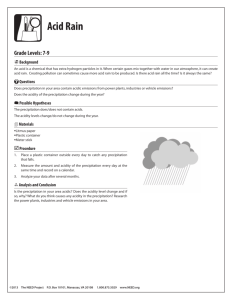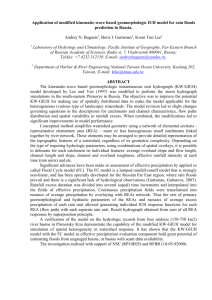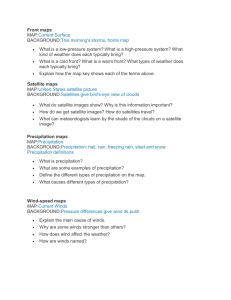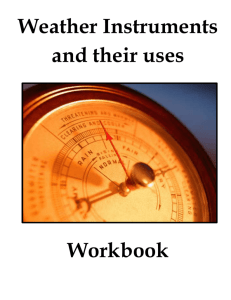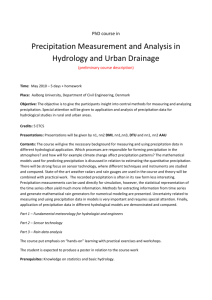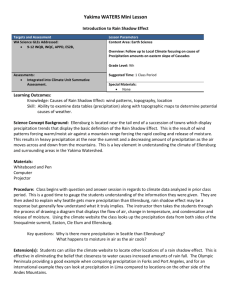doc - WMO
advertisement
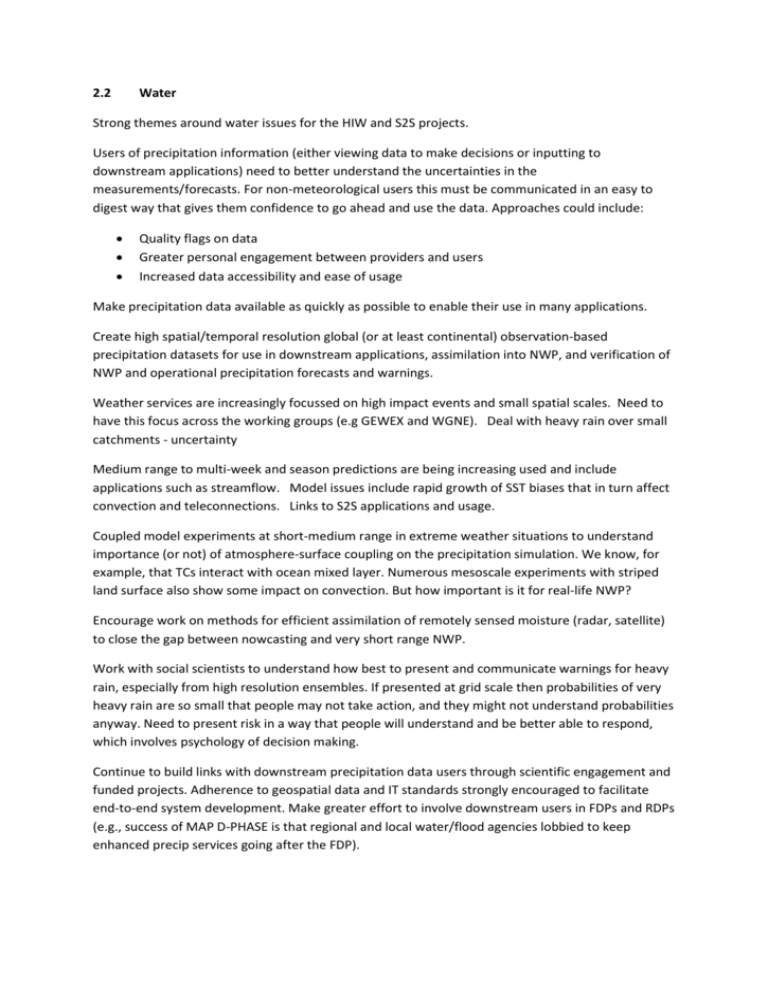
2.2 Water Strong themes around water issues for the HIW and S2S projects. Users of precipitation information (either viewing data to make decisions or inputting to downstream applications) need to better understand the uncertainties in the measurements/forecasts. For non-meteorological users this must be communicated in an easy to digest way that gives them confidence to go ahead and use the data. Approaches could include: Quality flags on data Greater personal engagement between providers and users Increased data accessibility and ease of usage Make precipitation data available as quickly as possible to enable their use in many applications. Create high spatial/temporal resolution global (or at least continental) observation-based precipitation datasets for use in downstream applications, assimilation into NWP, and verification of NWP and operational precipitation forecasts and warnings. Weather services are increasingly focussed on high impact events and small spatial scales. Need to have this focus across the working groups (e.g GEWEX and WGNE). Deal with heavy rain over small catchments - uncertainty Medium range to multi-week and season predictions are being increasing used and include applications such as streamflow. Model issues include rapid growth of SST biases that in turn affect convection and teleconnections. Links to S2S applications and usage. Coupled model experiments at short-medium range in extreme weather situations to understand importance (or not) of atmosphere-surface coupling on the precipitation simulation. We know, for example, that TCs interact with ocean mixed layer. Numerous mesoscale experiments with striped land surface also show some impact on convection. But how important is it for real-life NWP? Encourage work on methods for efficient assimilation of remotely sensed moisture (radar, satellite) to close the gap between nowcasting and very short range NWP. Work with social scientists to understand how best to present and communicate warnings for heavy rain, especially from high resolution ensembles. If presented at grid scale then probabilities of very heavy rain are so small that people may not take action, and they might not understand probabilities anyway. Need to present risk in a way that people will understand and be better able to respond, which involves psychology of decision making. Continue to build links with downstream precipitation data users through scientific engagement and funded projects. Adherence to geospatial data and IT standards strongly encouraged to facilitate end-to-end system development. Make greater effort to involve downstream users in FDPs and RDPs (e.g., success of MAP D-PHASE is that regional and local water/flood agencies lobbied to keep enhanced precip services going after the FDP).

